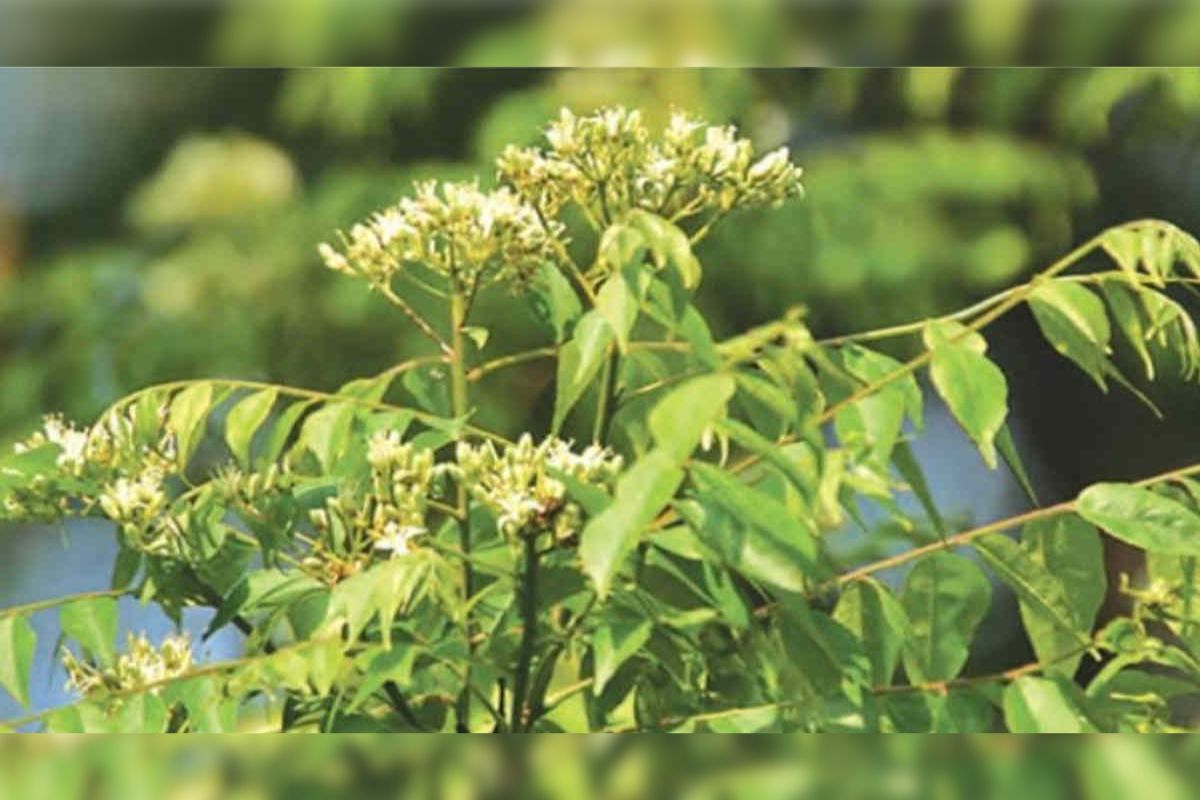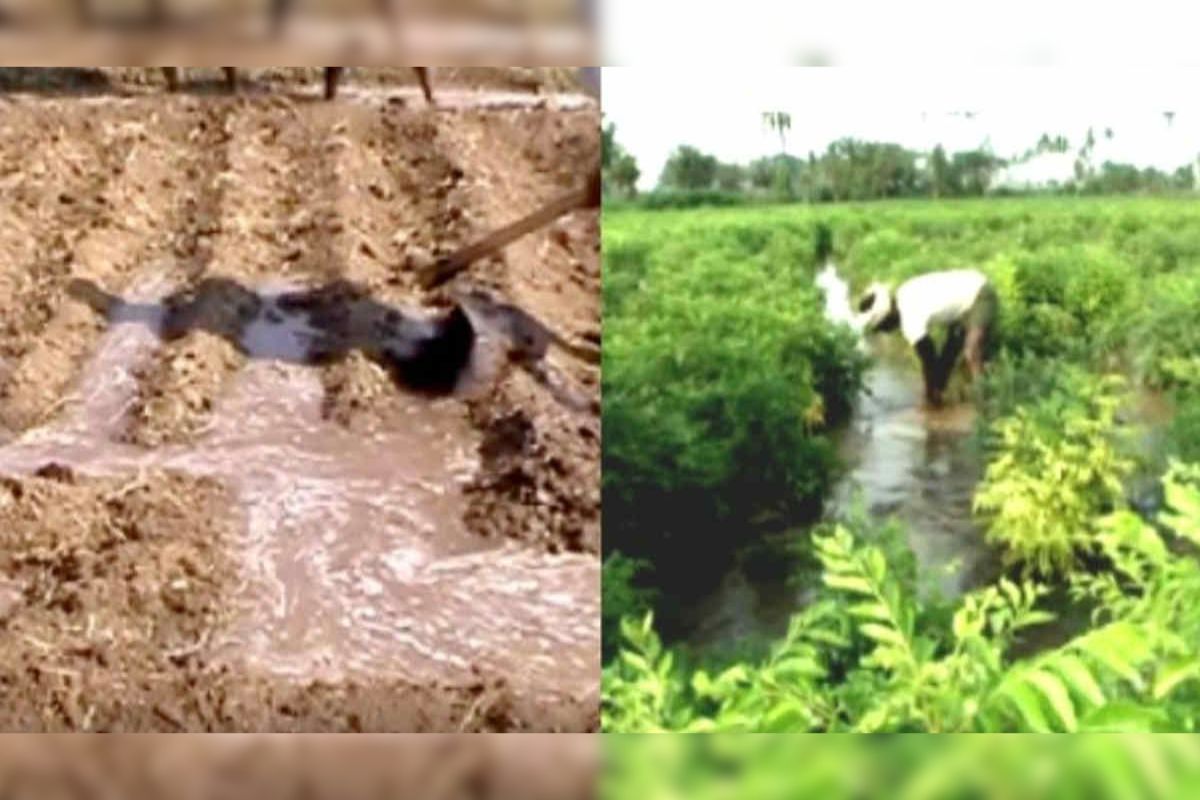Curry Leaf Cultivation is a means of earning year after year
Curry leaf plant gives yield for 10-15 years after planting once.
Cultivation of curry leaves gives the same commercial benefits as cultivation of all medicinal produce and spices or horticulture of fruits because by planting a plant of curry leaves once, its leaves are available for 10 to 15 years.
Curry leaves are a cheap and healthy spice full of medicinal properties. That is why organic fertilizers should always be used in its production. Its demand remains throughout the year. Its raw and soft leaves are more valuable and useful than cooked leaves. Curry leaf plants are harvested every third month. The outbreak of diseases and pests is also significantly less on this.
Curry leaves are also called sweet neem because their leaves look very similar to neem leaves. But they are not bitter like neem. The height of a curry leaf tree can be from 14 to 18 feet. But since the demand for its leaves is high, professional farmers allow the curry leaf tree to grow up to about 2.5 meters in height. Farmers take care that the curry leaf tree does not become a flower because then the development of this tree stops.

Use of curry leaves
Curry leaves have been widely used in South Indian cuisine for centuries, but now due to increasing awareness about its properties, its demand is increasing in other regions of the country. Therefore, curry leaves cultivation has the potential to become an excellent and regular source of income for farmers across the country. Curry leaves to enhance the taste and aroma of food and have many health benefits. That’s why curry leaves are widely used for domestic purposes, while there is also an industrial demand for its aromatic extract in soap making. It is quickly sold and bought in the market like vegetables.
Curry leaves are rich in nutrients
The nutrients present in curry leaves keep the body away from many diseases. It is rich in vitamins A, B, C, and E, iron, calcium, and folic acid. It is also considered beautifying for hair and skin. Its use increases immunity. It provides relief from fever and heat and ends disinterest in food. They are also beneficial for the eyes. Its stem also has particular importance in Ayurvedic treatment. The leaves, bark, and roots of this plant are used in indigenous medicine as a tonic, stimulant, carminative, and appetizer. Curry leaves are also used in making chutney and churan.

How to do advanced cultivation of curry leaves?
Climate: Curry leaf plant growth is best in a warm and humid climate. It needs temperatures with plenty of sunshine. Its plants grow well even at a minimum temperature of 10 degree Celsius in winter and a maximum of 40 degree Celsius in summer. Curry leaf plants can be grown even at an altitude of 1000 meters above sea level.
Soil: Curry leaves require fertile soil with proper water management. The pH value of the soil should be between 6 to 7 for its cultivation. Black soil with water logging is not suitable for this. Due to water logging during the rainy season, the possibility of many types of diseases in curry leaves plants increases.
Field preparation: Once planted, curry leaves can be harvested for many years. That’s why the field should be plowed well and deep before sowing. The soil should be leveled after two to three ploughings with the cultivator. Prepare shallow pits in a flat field at a distance of three to four meters in a row. Then mix appropriate amount of old cow dung manure and organic fertilizer in the soil in the pits and fill them in the pits 15 days in advance. Irrigate the pits after filling the soil.

Varieties of curry leaves: By the way, most of the farmers prefer the local varieties of curry leaves. But the University of Agricultural Sciences, Dharwad has also developed two improved varieties. These varieties, named DWD-1 and DWD-2, contain 5.22 and 4.09 percent curry leaf oil, respectively. The leaves of both the varieties are full of strong aroma and fetch a good price in the market.
Use of organic fertilizers: Curry leaves are used in medicines and spices, so the use of chemical fertilizers should always be avoided in its cultivation. That’s why, at the time of preparation of pits for sowing plants, use about 200 quintals of old and rotten cow dung manure per acre. After this, by applying organic compost at the rate of two to three kg to each plant every third month, abundant yield of curry leaves is obtained.
Seed Planting Method: Most of the farmers prefer to plant curry leaves plant through seeds. However, it can also be grafted. Both the methods have the same yield. Curry leaf seeds should be treated with cow urine before sowing them in pits. For this the seeds should be soaked in cow urine for 2-3 hours before transplanting. In each pit, two to three treated seeds should be buried 3-4 cm below the surface.
Seed Transplanting Time: Curry leaf seeds can be sown any time except in the winter season but March is the most favorable time. Seedlings sown in March become ready for first harvest by September-October.
Irrigation and Care: In addition to plenty of sunlight and fertile soil, the curry leaf plant needs adequate irrigation. Give regular irrigation to the crop in summer and light irrigation in winter. Do not give fertilizer at the time of irrigation. Remove the weeds that grow after irrigation by weeding them. It needs weeding only 1 to 2 times in a year. At the time of weeding, put soil on the plants, so that their roots do not remain open.
Harvesting: Generally after sowing every third month, curry leaves plant is ready for harvesting. That is, every quarter the farmer gets cash income from curry leaves cultivation. By the way, its leaves can be plucked at any time as required. While harvesting curry leaves, cut them only at a height of half a foot from the ground. This does not take much time for the plant and its branches to grow again. Curry leaf plants should be pruned before flowering as once flowering stops the growth of the plants.
Yield, drying and storage: Curry leaves cultivation yields 2 to 4 tons of leaves per hectare. The plucked leaves should be dried in a shady place and during this time they should be kept turning so that they do not rot and their quality does not deteriorate. Otherwise, you will not get a fair price in the market. The bad leaves should be sorted out and separated because if the powder is made by mixing it with healthy leaves, then its fragrance and quality will also fall. Dry leaves should be stored in a dry place warehouse. The climate of cold storage is not suitable for curry leaves.

Disease and pest control in curry leaves cultivation
Usually curry leaves plant is not attacked by insects, but sometimes due to change in weather, some insects flourish. These insects and their larvae damage the leaves. Since curry leaves are also a commercial crop, spray neem oil or neem water on the plants to protect the leaves from insect attack.
Root rot: If root rot disease occurs in waterlogged condition, then the whole plant gets ruined. The symptoms of this disease are initially seen as pale leaves which soon dry up and fall off. The best defense against root rot is not to allow water to stagnate in the curry leaves field. Still, as an immediate treatment, Trichoderma should be sprayed in the roots of the plants.
Termites: Soil-dwelling termites can damage the roots of curry leaves like any other plant. Because of this, the leaves of the plant start withering and gradually the whole plant dries up and dies. If there is a possibility of termite attack in the field, to prevent this, the seeds should be treated with chlorpyriphos at the time of sowing. If signs of termites are seen in the standing crop, then 2 ml solution of chloropyriphos per liter of water should be sprayed in the roots of the plant.
Also Read: Strawberry Farming: Bashir Dange is earning good profit with new technology
Contact us – If farmers want to share any valuable information or experiences related to farming, they can connect with us via phone or WhatsApp at 9599273766 or you can write to us at “[email protected]”. Through Kisan of India, we will convey your message to the people, because we believe that if the farmers are advanced then the country is happy.
You can connect with Kisan of India on Facebook, Twitter, and WhatsApp and Subscribe to our YouTube channel.



